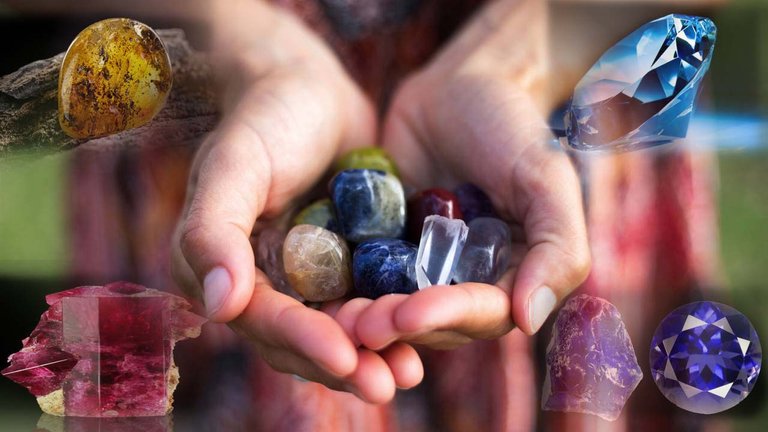
Secretos de la Tierra: Los Minerales más bellos
¡Hola, hola, Hivernautas! Continuamos con la serie Los secretos de la Tierra. Existen objetos apreciados y muy codiciados por su belleza y valor, pertenecientes a la familia de los Minerales. Los minerales son composiciones naturales que se ubican en la corteza terrestre y se han utilizado y valorado por su belleza y utilidad desde tiempos antiguos. Algunos de ellos pueden ser especialmente muy atractivos debido a sus colores, brillos y formas únicas.
Entre los minerales se encuentran algunos que por la belleza de su forma, la delicadeza de su color su brillo refulgente y las posibilidades de su pulido y tallado, se han calificado como gemas o piedras preciosas. El valor de una piedra preciosa depende de su belleza, duración y rareza. La talla de las piedras ayuda a reforzar su brillo, pues entonces la luz se refleja en las facetas de la gema, haciéndola refulgente. Los diamantes por ejemplo acostumbran a tallarse de modo que representan 58 facetas o caras que reflejan la luz, de tal modo que también se les da el nombre de brillantes.
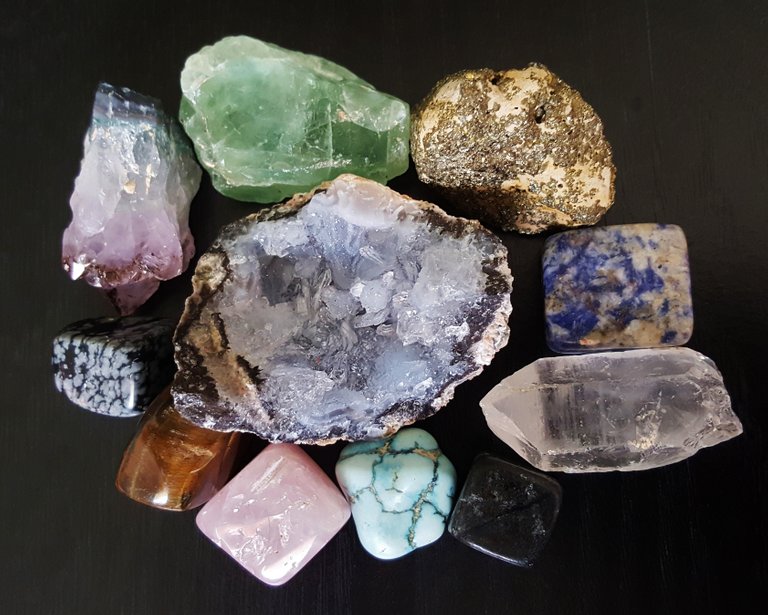
Representación de Minerales. Créditos: pxhere.com Imagen de uso libre
Las gemas, que no son más transparentes, suelen pulimentarse en una forma redondeada llamada carbujón, pero algunas, como el Jade o el Lapislázuli, se destinan a camafeos en los que escultores miniaturistas tallan en relieve bustos y figuras humanas o de animales. El diamante tiene un brillo adamantino, característicamente transparente. Representa tonalidades muy, muy difíciles de observar y solo en muy raras ocasiones son de color rojo intenso y azul. La mitad de la producción mundial de diamantes es de las variedades Bort y carbonado, de aplicación exclusivamente industrial. Otra cuarta parte se puede tallar, aunque presentan notables imperfecciones y solo una cuarta parte es susceptible de la calificación de piedras preciosas. Para indicar su peso, se utiliza el quilate, unidad equivalente a 0.2 gramos. Algunos diamantes se han hecho famosos, como el Cullinan descubierto en 1905 (3.106 quilates), el Koh-i-noor (106 quilates), o el Hope azul (44 quilates).
El berilo, que es el más frecuente de los minerales del berilio, presenta algunas variedades muy bien estimadas, tal como el Berilo noble, transparente y de bellas coloraciones; La Esmeralda, de intensísimo color verde, las Aguamarinas, verde-azuladas y de considerables dimensiones, entre otras.

El mineral más codiciado en la Tierra, el Diamante. Créditos: Stephy Chung de cnnespanol.cnn.com
El corindón es un óxido de aluminio de gran dureza que presenta dos variedades transparentes muy apreciadas en joyería: el Zafiro y el Rubí.
El Zafiro es de color azul profundo. Es una piedra preciosa que tiene además otras aplicaciones mucho más útiles. Por ejemplo, pequeños zafiros constituyen las puntas de las agujas de los tocadiscos. Con el Rubí sucede algo parecido. Se le aprecia como gema por su transparencia y color rojo intenso de sangre. Gracias a los rubíes, muchos relojes de pulsera se han mantenido en perfecto funcionamiento, pues son tan duros que no se desgastan con el uso a pesar del roce continuo que supone ser la montura de unos ejes en continuo movimiento.

Zafiro en bruto. Créditos: www.pxfuel.com Imagen de uso libre
Los cristales de Rubí son también un elemento clave para la joyería y relojes, aunque su uso también va destinado a generar ondas electromagnéticas de frecuencia óptica que produce luz coherente. En otras palabras, se usan para aplicaciones industriales en la creación del Láser Helio-Rubí.
Los rubíes más bellos proceden de Birmania, una de las minas explotadas exclusivamente para los reyes de aquel país y que a partir de 1889 entraron en explotación comercial. Los cristales defectuosos, turbios o de color impuro forman el corindón común, muy apreciado en la industria como abrasivo.
El corindón se emplea solo en forma de esmeril, que es una mezcla de granos de corindón, cuarzo, oligisto y magnetita. El esmeril se usa como polvo o pegado a un papel o tela y se encuentra en diversos gruesos para cubrir las necesidades de pulimentos más o menos finos.
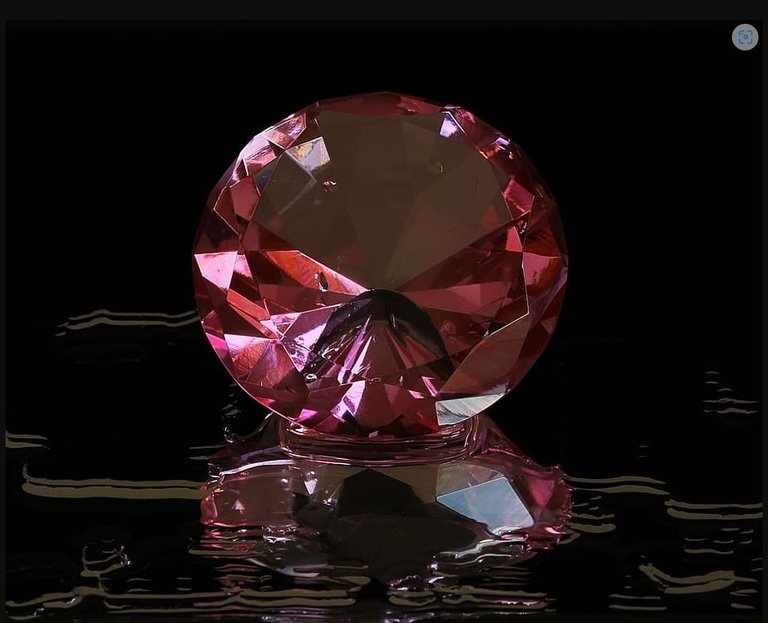
Piedra preciosa Diamante Rosa. Créditos: www.pxfuel.com Imagen de uso libre
El cuarzo es anhídrido silícico y cristaliza de muy diversas maneras. Es sin lugar a dudas el mineral más corriente de la corteza terrestre. Se le encuentra aislado y como elemento fundamental de muchas rocas de origen eruptivo, sedimentario o metamórfico.
El cuarzo es duro y frágil. Si no contiene impurezas químicas, es completamente transparente e incoloro, recibiendo el nombre de Cristal de Roca. Sin embargo, pequeñas cantidades de sustancias químicas bastan para teñirlo de diversos colores e incluso comunicarle opacidad. Naturalmente, el cuarzo es un mineral brillante; su brillo es vítreo, de cristal.
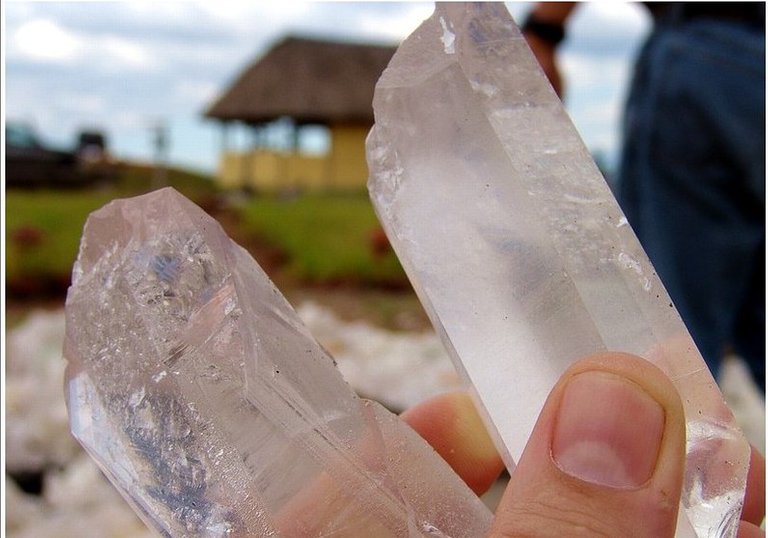
El cuarzo. Créditos: www.flickr.com/photos Imagen de uso libre
El Cristal de Roca se ha usado para fabricar elementos de instrumento óptimos, como pueden ser lentes y prismas, y también para recipientes de laboratorio, pues resisten muy bien a la temperatura y solo es sensible a la acción química del ácido fluorhídrico. Los cristales pequeños de Cristal de Roca, el cuarzo ahumado de color gris azulado, el cuarzo lechoso de color blanco y el cuarzo rosado son muy apreciados para bisutería de calidad, confeccionándose con collares y pulseras. La calcedonia, el ágata, el ónice, la carneola, el jaspe, el heliotropo y el ópalo son distintas variedades de cuarzo apreciadas en joyería que se pulen en forma de carbujón, destacando la belleza y delicado dibujo de las vetas coloreadas y brillantes de esas piedras.
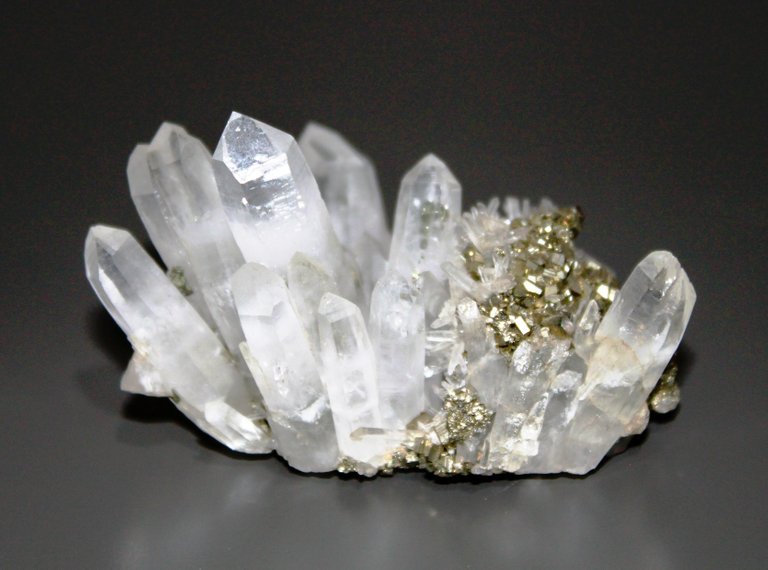
Cristal de Roca. Créditos: pxhere.com Imagen de uso libre
Mención especial merece una piedra que solo se encuentra en Brasil: el cuarzo amatista. Es de color azul y forma muy particular, macla (fusión de cristales que penetran uno dentro de otro) característica que permite por sí sola identificar esta variedad de cuarzo.
Los granates son un grupo de minerales de composición química muy variable. Las variedades apreciadas en joyería son el piropo y los granates de bohemia, de color característico, que son silicatos de aluminio y magnesio.
El valor concedido a las piedras preciosas ha hecho que se intentara y se consiguiera la fabricación de gemas sintéticas. Un procedimiento consiste en fundir alúmina sobre una llama de soplete oxhídrico, con la que se forma una ampolla transparente, que se tiñe con pigmentos minerales. Estas ampollas se tallan según la forma deseada. Partiendo del grafito se consiguen ya diamantes sintéticos que compiten con los naturales en aplicaciones industriales.
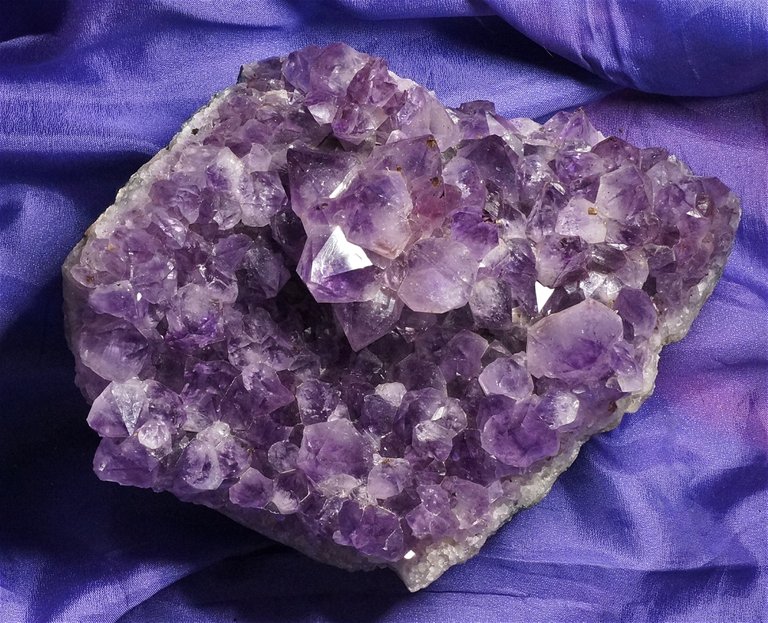
Cuarzo Amatista, encontrado solo en Brasil. Créditos: pxhere.com Imagen de uso libre
La Madre Tierra, en su proceso evolutivo de millones de años, ha creado estos minerales con potencialidad industriales. Esto lamentablemente también ha contribuído negativamente con el medio ambiente y ha estado históricamente asociado a malas condiciones de trabajos, entre otros puntos controversiales. Aun así, hay esfuerzos para promover la minería sostenible y las piedras preciosas de comercio justo para abordar estos problemas.
¡Hasta la próxima, Hivernautas!
Créditos:
Imagen 1: Autoría propia. Realizada con base en imágenes libres.
Imagen 2: Fuente
Imagen 3: Fuente
Imagen 4: Fuente
Imagen 5: Fuente
Imagen 6: Fuente
Imagen 7: Fuente
Imagen 8: Fuente
Fuentes de consulta:
- https://www.elsevier.es/es-revista-offarm-4-articulo-mineralocosmetica-propiedades-piedras-preciosas-13124842
- https://www.nytimes.com/es/2017/12/15/espanol/cultura/piedras-preciosas-secretos-tierra.html
- https://www.ifema.es/noticias/moda/cinco-piedras-preciosas-mas-caras
- https://geologiaweb.com/minerales/piedra-zafiro/
- https://www.reino-minerales.es/virtudes-de-las-piedras/piedra-rubi/
- https://outletminero.org/conoce-las-rocas-y-los-minerales-mas-preciosos-del-planeta/
English Edition

Secrets of the Earth: The most beautiful Minerals
Hello, hello, Hivernauts! We continue with the series The secrets of the Earth. There are objects appreciated and highly coveted for their beauty and value, belonging to the Minerals family. Minerals are natural compositions found in the earth's crust and have been used and valued for their beauty and usefulness since ancient times. Some of them can be especially very attractive due to their unique colors, brightness and shapes.
Among the minerals there are some that due to the beauty of their shape, the delicacy of their color, their brilliant shine and the possibilities of their polishing and carving, have been described as gems or precious stones. The value of a gemstone depends on its beauty, duration, and rarity. The cut of the stones helps to reinforce its brilliance, since then the light is reflected in the facets of the gem, making it brilliant. Diamonds, for example, are usually cut so that they represent 58 facets or faces that reflect light, in such a way that they are also called brilliants.

Representation of Minerals. Credits: pxhere.com Free use image
The gems, which are no longer transparent, are usually polished into a rounded shape called a carbochon, but some, such as Jade or Lapis Lazuli, are destined for cameos in which miniaturist sculptors carve in relief busts and human or animal figures. The diamond has an adamantine luster, characteristically transparent. It represents very, very difficult hues to see and only very rarely are they deep red and blue. Half of the world production of diamonds is of the Bort and Carbonado varieties, exclusively for industrial application. Another quarter can be cut, although they show notable imperfections and only a quarter can be classified as precious stones. To indicate its weight, the carat is used, a unit equivalent to 0.2 grams. Some diamonds have become famous, such as the Cullinan discovered in 1905 (3,106 carats), the Koh-i-noor (106 carats), or the Hope blue (44 carats).
The beryl, which is the most frequent of the beryllium minerals, presents some very highly esteemed varieties, such as the Noble Beryl, transparent and with beautiful colours; The Emerald, of an intense green color, the Aquamarine, blue-green and of considerable size, among others.

The most coveted mineral on Earth, the Diamond. Credits: Stephy Chung of cnnespanol.cnn.com
Corundum is a very hard aluminum oxide that has two transparent varieties highly appreciated in jewelry: Sapphire and Ruby.
Sapphire is deep blue in color. It is a precious stone that also has other much more useful applications. For example, small sapphires make up the tips of record player needles. Something similar happens with the Ruby. It is appreciated as a gem for its transparency and intense blood red color. Thanks to rubies, many wristwatches have remained in perfect working order, as they are so hard that they do not wear out with use despite the continuous rubbing that comes from being mounted on axes in continuous motion.

Raw sapphire. Credits: www.pxfuel.com Free use image
Ruby crystals are also a key element for jewelry and watches, although their use is also intended to generate electromagnetic waves of optical frequency that produce coherent light. In other words, they are used for industrial applications in the creation of the Helium-Ruby Laser.
The most beautiful rubies come from Burma, one of the mines exploited exclusively for the kings of that country and which began commercial exploitation from 1889. Defective, cloudy or impure colored crystals form common corundum, highly prized in industry as an abrasive.
Corundum is used only in the form of emery, which is a mixture of corundum, quartz, oligisto, and magnetite grains. Emery is used as a powder or glued to a paper or cloth and is found in various thicknesses to cover the needs of more or less fine polishing.

Pink Diamond precious stone. Credits: www.pxfuel.com Free use image
Quartz is silicon anhydride and crystallizes in many different ways. It is without a doubt the most common mineral in the earth's crust. It is found isolated and as a fundamental element of many rocks of eruptive, sedimentary or metamorphic origin.
Quartz is hard and brittle. If it does not contain chemical impurities, it is completely transparent and colorless, receiving the name of Rock Crystal. However, small amounts of chemicals are enough to tint it in various colors and even impart opacity to it. Naturally, quartz is a brilliant mineral; its shine is vitreous, crystal.

The quartz. Credits: www.flickr.com/photos Free use image
Rock Crystal has been used to manufacture optimal instrument elements, such as lenses and prisms, and also for laboratory containers, since they resist temperature very well and are only sensitive to the chemical action of hydrofluoric acid. The small crystals of Rock Crystal, the bluish-grey smoky quartz, the white milky quartz and the pink quartz are highly prized for quality costume jewellery, made into necklaces and bracelets. The chalcedony, the agate, the onyx, the carneola, the jasper, the heliotrope and the opal are different varieties of quartz appreciated in jewelry that are polished in the form of a carbuchon, highlighting the beauty and delicate drawing of the colored and brilliant veins of these stones.

Rock crystal. Credits: pxhere.com Free use image
Special mention deserves a stone that is only found in Brazil: amethyst quartz. It is blue in color and has a very particular shape, a twin (fusion of crystals that penetrate one into the other), a characteristic that alone allows the identification of this variety of quartz.
Garnets are a group of minerals with highly variable chemical composition. The varieties appreciated in jewelry are the pyrope and the bohemia garnets, of characteristic color, which are aluminum and magnesium silicates.
The value placed on precious stones has led to attempts and success in the manufacture of synthetic gems. One procedure consists of melting alumina over an oxyhydrogen torch flame, with which a transparent blister is formed, which is tinted with mineral pigments. These blisters are carved according to the desired shape. Starting from graphite, synthetic diamonds are already obtained that compete with natural ones in industrial applications.

Amethyst Quartz, found only in Brazil. Credits: pxhere.com Free use image
Mother Earth, in her evolutionary process of millions of years, has created these minerals with industrial potential. Unfortunately, this has also contributed negatively to the environment and has historically been associated with poor working conditions, among other controversial points. Even so, there are efforts to promote sustainable mining and fair trade gemstones to address these issues.
Until next time, Hivernauts!
Credits:
Image 1: Autoría propia. Realizada con base en imágenes libres.
Image 2: Fuente
Image 3: Fuente
Image 4: Fuente
Image 5: Fuente
Image 6: Fuente
Image 7: Fuente
Image 8: Fuente
Reference sources:
- https://www.elsevier.es/es-revista-offarm-4-articulo-mineralocosmetica-propiedades-piedras-preciosas-13124842
- https://www.nytimes.com/es/2017/12/15/espanol/cultura/piedras-preciosas-secretos-tierra.html
- https://www.ifema.es/noticias/moda/cinco-piedras-preciosas-mas-caras
- https://geologiaweb.com/minerales/piedra-zafiro/
- https://www.reino-minerales.es/virtudes-de-las-piedras/piedra-rubi/
- https://outletminero.org/conoce-las-rocas-y-los-minerales-mas-preciosos-del-planeta/
Congratulations @jrevilla! You have completed the following achievement on the Hive blockchain And have been rewarded with New badge(s)
Your next target is to reach 80 posts.
Your next payout target is 500 HP.
The unit is Hive Power equivalent because post and comment rewards can be split into HP and HBD
You can view your badges on your board and compare yourself to others in the Ranking
If you no longer want to receive notifications, reply to this comment with the word
STOPTo support your work, I also upvoted your post!
Check out our last posts:
Support the HiveBuzz project. Vote for our proposal!
¡Felicitaciones!
1. Invierte en el PROYECTO ENTROPÍA y recibe ganancias semanalmente. Entra aquí para más información.
3. Suscríbete a nuestra COMUNIDADEntra aquí para más información sobre nuestro trail., apoya al trail de @Entropia y así podrás ganar recompensas de curación de forma automática.
4. Creación de cuentas nuevas de Hive aquí.
5. Visita nuestro canal de Youtube.
Atentamente
El equipo de curación del PROYECTO ENTROPÍA
Thanks for your contribution to the STEMsocial community. Feel free to join us on discord to get to know the rest of us!
Please consider delegating to the @stemsocial account (85% of the curation rewards are returned).
You may also include @stemsocial as a beneficiary of the rewards of this post to get a stronger support.
¡Enhorabuena!
✅ Has hecho un buen trabajo, por lo cual tu publicación ha sido valorada y ha recibido el apoyo de parte de CHESS BROTHERS ♔ 💪
♟ Te invitamos a usar nuestra etiqueta #chessbrothers y a que aprendas más sobre nosotros.
♟♟ También puedes contactarnos en nuestro servidor de Discord y promocionar allí tus publicaciones.
♟♟♟ Considera unirte a nuestro trail de curación para que trabajemos en equipo y recibas recompensas automáticamente.
♞♟ Echa un vistazo a nuestra cuenta @chessbrotherspro para que te informes sobre el proceso de curación llevado a diario por nuestro equipo.
🏅 Si quieres obtener ganancias con tu delegacion de HP y apoyar a nuestro proyecto, te invitamos a unirte al plan Master Investor. Aquí puedes aprender cómo hacerlo.
Cordialmente
El equipo de CHESS BROTHERS